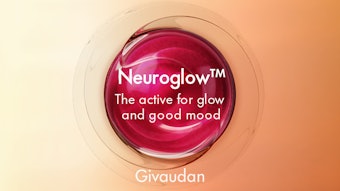Nanoemulsions have the potential to be inherently antimicrobial, according to Susan Ciotti, PhD, and David Peralta of Nanobio Corporation, a company founded on a nanoemulsion technology with antibacterial benefits. While most emulsions employ an oil phase, a water phase and a surfactant, the company’s nanoemulsion includes a second surfactant and a solvent. In addition, the process to create the nanoemulsion is proprietary and involves a few steps not seen in traditional emulsion making.
According to Ciotti, the surface chemistry is also different than conventional nanoemulsions. “The combination of surfactants at the interface of the nanoemulsion droplets and the way [the nanoemulsion] is manufactured causes the particles to have high energy, and they tend to fuse with viruses and bacteria to destroy them,” Ciotti explained. “It is a novel way of getting something to attack a microbial particle.” And although the droplets are high in energy, they retain a GMP stability of three years or more, and a longer non-GMP stability, according to Peralta.
Ciotti emphasized it is the nanoemulsion itself that is the antiviral agent and not an ingredient encapsulated within it. “Usually in the emulsion literature or products out [on the market], an active drug is encapsulated or combined with the emulsion and that is what gives the product its efficacy, not the emulsion itself,” Peralta concurred. “Our nanoemulsion droplet is what is doing the killing and creating the effect we desire. Even though the ingredients in the nanoemulsion individually are not antimicrobial, when added together and emulsified via a proprietary process, they become antimicrobial in vivo due to the high energy state and the surface activity of the emulsion.”
Treatment for Cold Sores
The technology has been investigated for a number of applications. “It can be used topically against any envelope virus, fungi, bacteria or protozoan spore,” noted Peralta. However, the company initially targeted Herpes labialis, or the herpes infection of the lip. Through a partnership with GlaxoSmithKline (GSK), that target may soon become a reality.
Nearly five years ago, the company conducted a study to determine the efficacy of the nanoemulsion on inhibiting the Herpes labialis virus from forming cold sores. “We tested topical doses of the nanoemulsion up to 0.1%, and although we saw efficacy, we did not feel that we plateaued,” noted Peralta. A few years later, a second study with 0.3% of the nanoemulsion showed greater efficacy and proved to be the optimal dose, which generated interest from GSK.
According to Peralta, the principal products that show efficacy in treating Herpes labialis are oral antivirals. “Herpes is unique because it is dormant in the body and released when there is stress from a respiratory infection, sunlight, etc.” He explained that oral antivirals penetrate deep into the tissue, inhibiting viral pathogens and preventing the virus from spreading, whereas topical products do not penetrate well. The company’s nanoemulsion, however, is said to effectively penetrate; according to Peralta, “upon reaching the dermis, we lyse the virus before it lyses healthy skin cells and causes a fever blister.”
Upon contact with the virus, the nano droplets use the surfactants and energy stored within to fuse with and disrupt the viral membrane. Ciotti noted the beauty of the technology is that viruses may not become resistant to it. “Viruses can become resistant to other antimicrobial agents because the bugs get smarter and become resistant. [However, the nanoemulsion’s action] is totally physical. The viruses cannot protect against the lysing of the nano droplets,” Ciotti said.
Safety Considerations
While consumers have expressed concern for using products containing nanoparticles, which the US Food and Drug Administration (FDA) has defined as being 1–100 nm in size, Peralta notes that the size of the droplets in the company’s nanoemulsion is approximately 180 nm. In addition, the droplets are not solid particles. “Most of the nano-sized products raising safety concerns have solid components, such as silver or gold particles, whereas our nanoemulsion droplets are biodegradable materials.” When the company’s nanoemulsion droplets fuse with a pathogen, they break down, according to Ciotti. “There is an issue with hard particles because they are taken up and they enter the body. Our particles break up upon hitting the target, almost like a soft bullet,” explained Ciotti.
Other Antimicrobial Uses
The company is developing the technology for other applications, including acne. However, as Peralta noted, “Many things besides the microbial component contribute to acne.” The nanoemulsion can kill the P. acnes bacteria, but the company is investigating ways to target the causes deep within the skin. In addition to anti-acne, the nanoemulsion is being developed to treat nail fungus, ringworm, certain viral warts and cystic fibrosis. Ciotti notes that once people understand how the technology works, they find it novel. “Everyone always asks, ‘Where is the drug?’ The droplet is the drug.”
-Katie Schaefer, Cosmetics & Toiletries magazine










